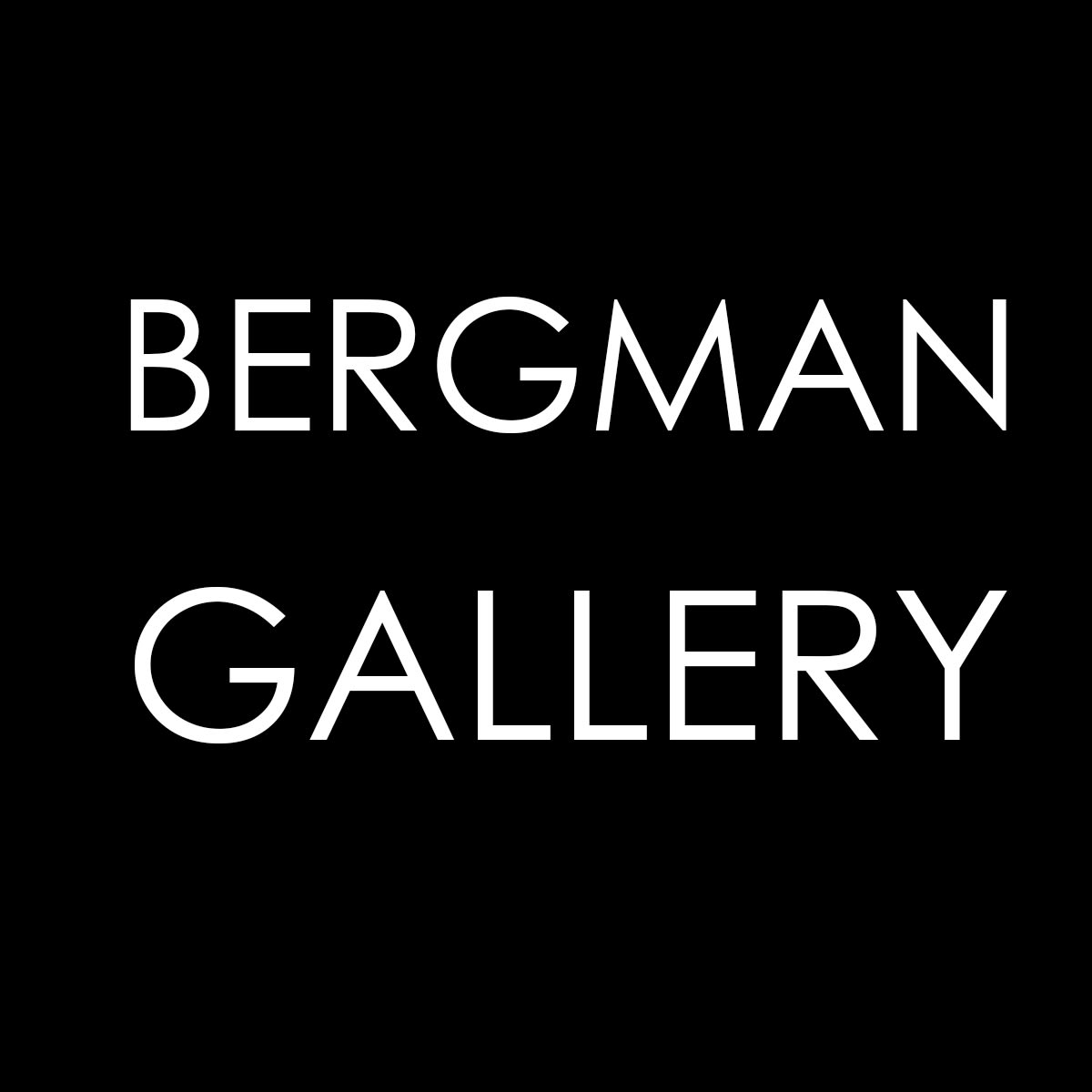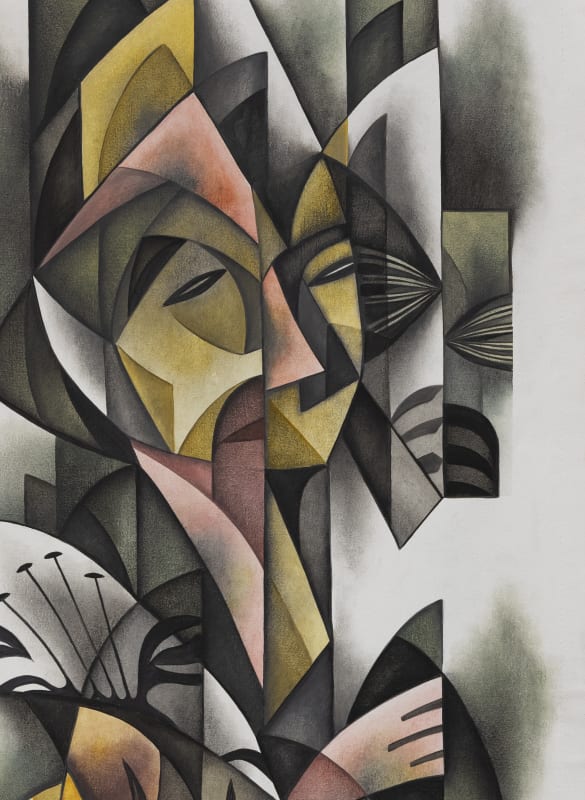Oceania denotes a sea of islands with their inhabitants. The world of our ancestors was a large sea full of places to explore, to make their homes in, to breed generations of seafarers like themselves. People raised in this environment were at home with the sea. They played in it as soon as they could walk steadily, they worked in it, they fought on it. They developed great skills for navigating their waters, and the spirit to traverse even the few large gaps that separated their island groups.[1]
—Epeli Hauʻofa
In the beginning, there was a period of future-gazing, in which stories, memories, and imagination conspired in the mind of the artist, a navigator between worlds, to produce a vision of what might be. Colours and forms would come together into works and bodies of work. An unexperienced palace in a far off land would be textured with unfamiliar images, filled with unuttered words. The project is hardly a strange one. Venice is known for its grand buildings, many of them decorated with glorious cycles of paintings. It has, over the years, asserted itself as a place where art by an extraordinary multiplicity of makers is shown to an equally extraordinary multiplicity of visitors. This year, the panoply will include the work of Mahiriki Tangaroa, the first artist from what is today the nation of the Cook Islands (the indigenised name is Kūki ʻĀirani) to dream her way into ‘La Serenissima’.
It is difficult not to find deep significance in the arrival of Kaveinga - Angels of the Ocean in Venice. The points of connection between the city and the Cook Islands are strong. They occupy similar positions in the popular imagination as places of transcendence and wonder. Seen in photographs, they seem impossible, unreal. Yet, when one actually visits them, it becomes apparent that the photographs have, if anything, under-promised. Truth stretches credulity still further. Both places have long been promoted to people from elsewheres. They attract great numbers of tourists, who are recognised as important in an economic sense, even as they represent threats to the exquisite environments and to ways of living that are not directed to visitor pleasure. Both places stand to suffer considerably from the effects of climate change.
The most poignant tie is also the most relevant to Tangaroa’s work. The Cook Islands share with Venice, and the other islands of the Veneto, a history that is intimately entwined with the water. While the city is sometimes cast as in a struggle with the sea, at risk of being washed away, the sea is also a life-giver, a pool of resources at least as important as the land, and a pathway to other places—a means and a call to movement. The sea is likewise central in the Cook Islands, as it is central for the community of Te Moana-nui-a-Kiwa (the Pacific Ocean), of which the Cook Islands are a part. Tangaroa’s works are, at their core, celebrations of the ocean and of the people who are connected to the ocean with the same depth and vigour as their ancestors.
As Nicholas Thomas’s recent book, Voyagers, makes clear, the seafaring prowess of Moana people has been recognised for a long time, including by outsiders. In particular, the exploration and settlement of what is today eastern and southern Polynesia, between about 900 and 1200 CE, has been heralded as an unparalleled feat.[2] Te Rangi Hīroa memorably called the voyages ‘the most marvellous Odyssey the world has ever known’.[3]Yet Moana maritime achievement remains under-appreciated by many. The situation obtains even in the region itself, especially among those of us who are of European heritage. For decades, vital local histories have been little taught in schools and little publicised outside specialist contexts. Sometimes, they have been actively denied. Meanwhile, figures like Samuel Wallis and James Cook have been celebrated with books and monuments, their names graved on places to which they were often but fleetingly connected.
Kaveinga is a statement of a more enduring relationship with the Moana. It is a cycle, composed of twelve panels of unstretched canvas that coalesce into three tetraptychs titled Ocean Symphony, Signals in the Stars, and Tension in the Tide. The number twelve evokes systems that shape or help to order the lives of people the world over: the hours of the day, the months of the year, the signs of the zodiac. But the content of the works is more immediately local, relating to or expressing the Cook Islands and its expansive neighbourhood. It acknowledges the tradition of voyaging, by which the ocean was explored and its countless islands settled, and by which connections between certain islands and archipelagos were maintained for a host of purposes, including community-building and trade, over generations.
The titles Signals in the Stars and Tension in the Tide relate to navigational knowledge developed and utilised by Moana people, including people of the Cook Islands: intimate understanding of the stars and other heavenly bodies; of the actions of the sea, including swells and currents; of wind patterns and cloud formations; and of animal behaviour. The overarching title, Kaveinga, can be translated as ‘compass’, denoting not an instrument in the Western sense, but a more holistic system, based on the observance of natural phenomena, by which location and direction could be gleaned by expert navigators. The series of paintings produced by Tangaroa fulfils a similar function, supporting movement through spaces temporal and cultural, as well as physical, particularly for people of Cook Islands heritage.
Correspondingly, the motifs in the works are a mixture of the historical and the contemporary, the spiritual and the quotidian. The human figures in the paintings represent both Cook Islands people and gods, most notably Tangaroa, the god of the ocean and of fertility. The style of the figures is noticeably in sympathy with sculptures in wood and stone from the Cook Islands, and especially carvings from Rarotonga showing the god. Tangaroa is of great significance in many Moana cultures, in which he is known by a number of cognate names, including Taʻaroa, Takaroa, and Kanaloa. In Rarotonga, where Mahiriki Tangaroa lives, he has traditionally held the position of supreme deity, a status that might be understood to reflect the centrality of the ocean in the lives of the people of the island.
As in other parts of Oceania, Christian missionary activity in the Cook Islands was zealous and effective. Gods like Tangaroa and Rongo (associated with war, peace, and agriculture) were abandoned in favour of the Christian god. Effigies were actively destroyed, and many oral histories and cultural practices were forgotten. Mahiriki Tangaroa has observed that the fervent embracing of Christianity has had an enduring effect of erasure, not only instigating cultural loss in the past, but also inhibiting cultural return in the present. Her works, however, are not pessimistic. They advocate relearning and remembering of arts, sciences, and other cultural practices that once thrived in the Cook Islands. The artist speaks from a place of awareness. A former curator and director of the Cook Islands National Museum, she is well-versed in the country’s histories and cultures, has attended conferences, and has engaged with holders of traditional knowledge.
Kaveinga is a welcoming body of work. Among its forms are many that will be familiar to people from the Cook Islands, the Moana region, and beyond. Flowers, such as frangipani, heliconia (lobster claws), hibiscus, and lilies all appear. Mangoes and taro leaves acknowledge important foods. So do coconuts, which have diverse applications. Animals shown include the relatively modern rooster and the kotaʻa, the frigate bird, which is known in Oceania as a sign of near land and as an omen of imminent storms. Abstracted images of ‘flip-flops’, or slip-on sandals, reflect contemporary, casual dress, and add a note of humour. Tangaroa’s palette encompasses passages of brilliant colour, in sympathy with the vibrancy of the Cook Islands, its flora, and its fauna, but it is rooted in forms of black and white. Now solid, now dissolving, they suggest a tension between the imagined and the real, the forgotten and the remembered, the tangible and the transcendent.
Tangaroa’s paintings depend to a great degree on artforms developed in Oceania. Her sources include Cook Islands carving, as has been noted, tīvaevae quilting, which includes stylised botanical forms, and tapa bark cloth, which tends to employ a limited range of colours and centre on geometric forms. Viewers might detect a nod to Cubism in the passages of faceting and transparency. These not only reflect the artist’s knowledge of the movement, but also underscore the extent to which its founders drew on Moana art. There are also connections with photography. Tangaroa majored in the medium during her course of study at the University of Canterbury’s School of Fine Arts in Ōtautahi Christchurch, and she has long used photographs—most historical and monochromatic—as a means of learning about customary art.
Like many people from the Oceania region, Tangaroa has strong ties to Aotearoa, where she was born and raised. In 1998, the year after she graduated from art school, she visited her ancestral homeland and made it her base. However, she has maintained connections to her birthplace, bringing to it her own art and the art of her peers. The relationship between Aotearoa and the Cook Islands is economic and political. The Cook Islands is an independent nation in ‘free association’ with New Zealand. But it is also cultural. The languages New Zealand Māori and Cook Islands Māori are, for many speakers, mutually intelligible. While important and clear distinctions of course obtain, numerous aspects of history and tradition are shared. Within the close-knit groups of Polynesia, Aotearoa and the Cook Islands are especially close.
Movement between Aotearoa and the other islands of the Moana is common. It would, no doubt, be rather cringe-inducing to suggest that air travel constitutes a modern-day equivalent to the voyages—epic and more everyday—of centuries past. It is perhaps more appropriate, more relevant to consider the extent to which Oceania remains interconnected, and remains grounded in extraordinary cultural invention, led by the descendants of those who first settled the great ocean that constitutes around a third of the surface of the globe. It has taken rather a long time for artworks from the Cook Islands to travel to Venice. It is tempting to say that it has taken too long. But such a statement would perhaps wrongly imply that the voyage is one of cultural necessity.
Mahiriki Tangaroa’s Kaveinga - Angels of the Ocean do not voyage because they lack anything. They voyage to adventure, and to take messages to the wider world. In their form, they are at once sails, maps, pieces of tapa, and proclamations. They declare their status as emissaries, to borrow an expression from another Moana artist, Lisa Reihana. They greet a Europe that has for centuries now harboured curiosity and confusion about the Moana in equal measure. It is right to be curious. Confusion need not persist. In the beginning, there was a period of future-gazing. In the end, there is something similar. The palace has been adorned, with works steeped in memory and story. They are of the past, but they also enfold a future. You are looking at paintings that are also people. These people are uniquely proficient travellers. They move about their ‘sea of islands’. They venture through time. They navigate between all manner of worlds.
[1] Epeli Hauʻofa, ‘Our Sea of Islands’, Contemporary Pacific 6, No. 1 (spring 1994): 148–61.
[2] Nicholas Thomas, Voyagers: The Settlement of the Pacific (London: Head of Zeus, 2021), 124–26.
[3] Te Rangi Hīroa Peter Henry Buck, Anthropology and Religion (New Haven: Yale University Press, 1939).


